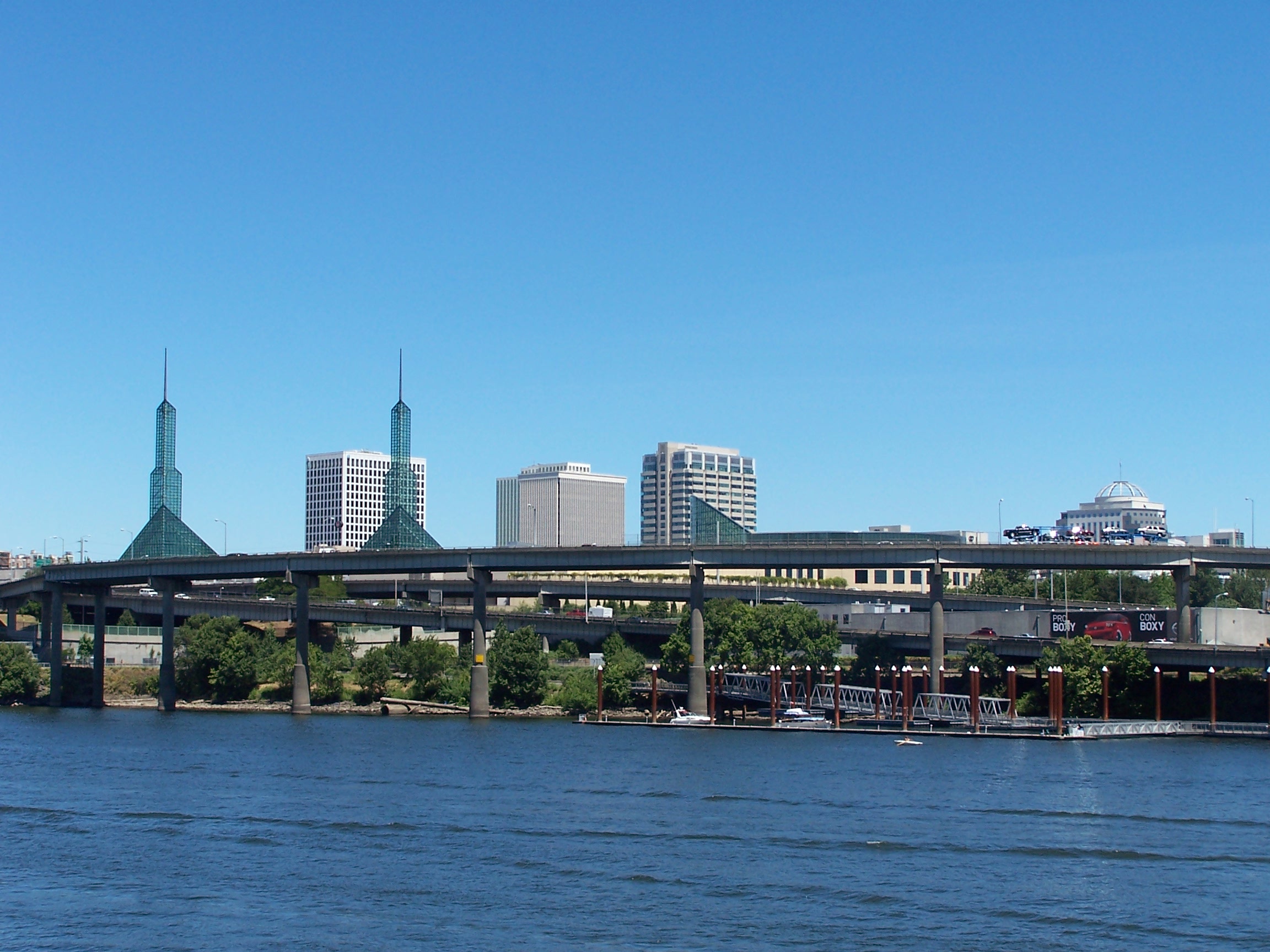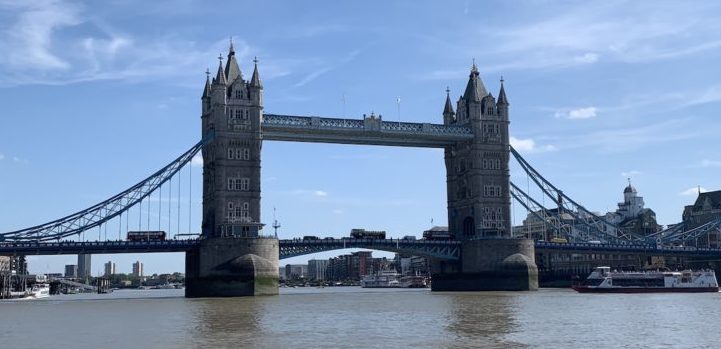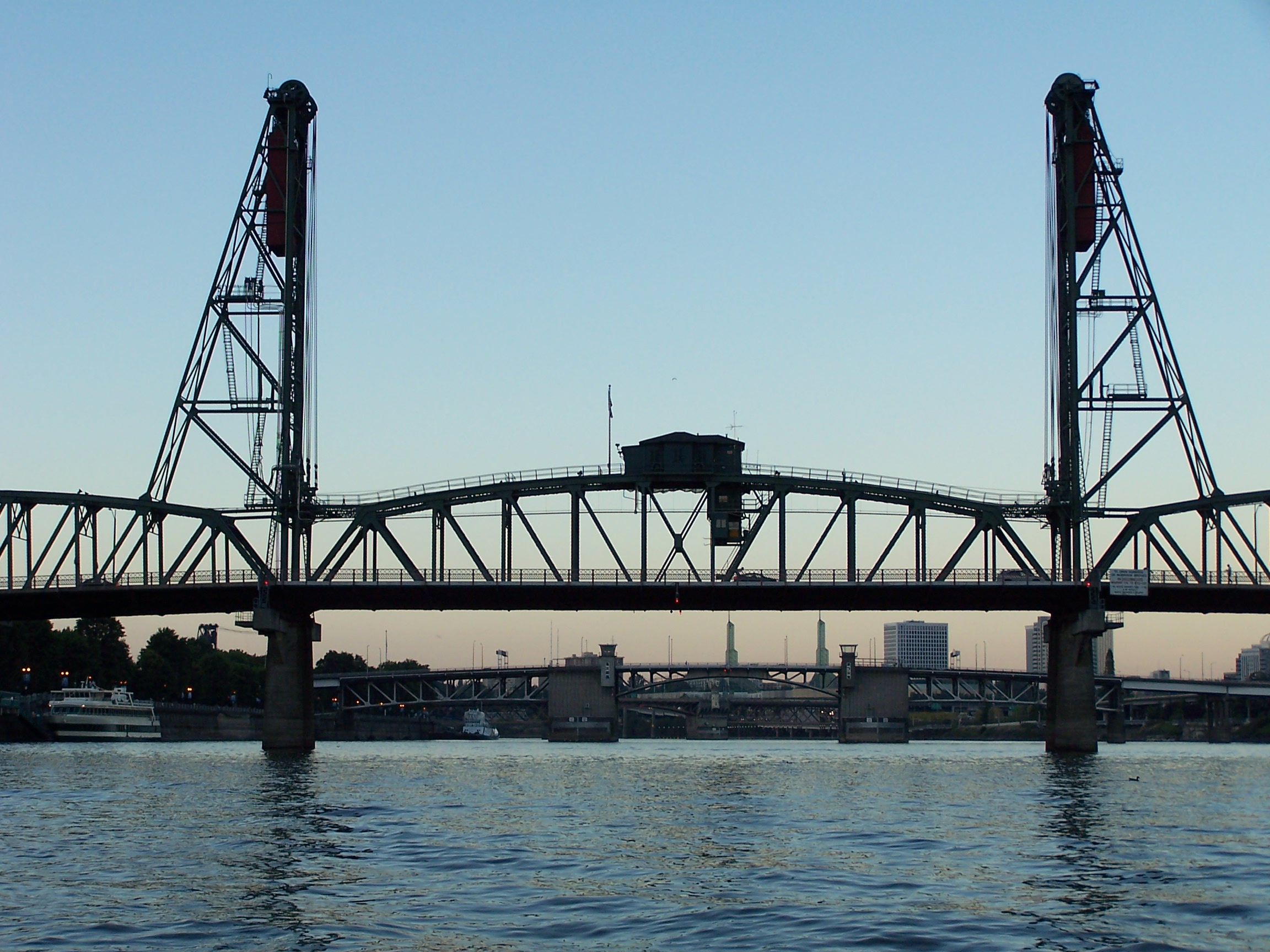It’s been over 40 years since the Freeway Revolts helped keep Portland from following other American cities into the tangled abyss of massive freeway infrastructures. In what may be the major turning point in Portland’s modern history, residents of Portland began to reject the plan put forward by the Godfather of freeways in America, Robert Moses. That plan had already led to the I-5, I-84, I-405 and Highway 26 freeways, the construction of which did major damage to several Portland neighborhoods, and separated residents from the river and each other.
Those freeways were arguably necessary for Portland’s growth, but the next wave of planned freeways was going to be far more devastating for the cities old neighborhoods. Imagine the “Laurelhurst Freeway”, the “Sellwood Freeway” and the “Mt. Hood Freeway” all slicing through SE Portland, and you get a sense of what could have been lost. Fortunately for Portland, the relatively easy fight in 1968 to demolish Harbor Drive (the old waterfront freeway alignment through downtown before the east side I-5 alignment was built) gave a lot of momentum to the anti-freeway movement. This momentum helped kill the other planned freeways, except for the I-205 freeway, which was reduced in size to allow for a future transit right-of-way and bike path (this turned out to be a good move, since the Green and Red line trains now utilize the transit right-of-way).
Since the completion of I-205 in 1983, there have been no major changes or additions to the Portland freeway landscape. The major concern is the Columbia River Crossing, currently the location of aging twin drawbridges and the only stoplight on I-5 between Canada and Mexico. Beyond this, there is little in the way of concrete planning (no pun intended) for the future of Portland’s road system. So, in the spirit of community, we offer a few ideas to move the freeway system forward in the 21st century.
1) Bury the Marquam Bridge
As we’ve said before, the Marquam Bridge (and, more importantly, its giant concrete approach ramps) is by far the biggest eyesore in Portland. Putting this crossing underground makes a lot of sense, not all of them aesthetic. The bridge and ramps take up an enormous amount of waterfront property. This is particularly important on the west side of the river, as the Marquam approaches and I-405 interchange take up valuable real estate (and form a substantial barrier) between downtown and the emerging South Waterfront district. Finding a way to tunnel I-5 under the Willamette and remove the above-ground approach ramps on both sides of the river would be a huge boon to the city.
2) Destroy the Eastside Freeway
Another way to get rid of the Marquam Bridge would be to decommission and destroy the entire Eastside Freeway alignment from the Marquam to the Fremont Bridge. This would make I-405 the main route for I-5 through the center city. The I-405 corridor and Fremont Bridge are under-utilized most of the time, and this would certainly change that. The downside is that the I-405 corridor doesn’t really lend itself to future expansion, so one key would be using signage to do a better a job of moving all through traffic to an improved and expanded I-205 corridor.
3) Capping I-405
Beloved mayor Vera Katz pushed this idea in the 1990s to help heal the wounds caused by the creation of I-405 through the western edge of downtown Portland. The plan was to build caps over the sunken interstate that would reconnect neighborhoods and add back 28 of the 36 blocks that were destroyed by building the freeway. An example of this idea in action is Seattle’s Freeway Park over I-5. Despite the cost, which would be substantial, I think few people would argue over the obvious benefits of a plan like this one. Plus, creative solutions could be found, for example, developers could finance the construction of the caps for rights to build on them once they are finished.
4) The 405 Grand Canal
I wish I had come up with this idea myself, but this one I borrowed from another source. While removing the I-405 is not high on anyone’s priority list, there may be a day when it is no longer needed. Due to the corridor being sunk below grade, and thanks to the drainage patterns of the West Hills, it might be possible to turn the I-405 into a Grand Canal through Portland. Imagine all the new waterfront property, not to mention improved water transportation options. I know I’d love to ride a gondola through the Pearl District some day.
5) The Nuclear Option
This is the big one, the pipe dream, where Portland declares itself (almost) completely freeway free. Over time, destroy both the I-5 and I-405 corridors, expand the I-205 corridor and Glenn Jackson Bridge to the maximum possible capacity and make that the only North/South freeway alignment. All of central and north Portland, including virtually all of the city’s historic neighborhoods, would be free of noisy traffic, divisive canyons and giant concrete eyesores. The cities neighborhoods could be reunified and the MAX and streetcar systems expanded to give clean, fast public transportation to every corner. Not too shabby…but it will likely never happen.



Portland is ran by nothing but stouch Liberals who have barely any qualifications and are massively brainwashed to hate cars *unless you drive tiny electric Obama cars which are actually a crappy remake of the economy cars of the early 80s* However these will go dead if you don’t charge them and become an immobile brick.
They also wanted to charge you an unfair tax for how far you drive. If you work further away you will pay more then twice the amount as the guy who only drives less then 5 miles.
Public transportation is great to a point but to be useful it has to go beyond point A to point B. You need to stop somewhere in between and it’s likely you can bike faster.
Dad once lived in San Francisco going to medical collage and found out the hard way that public transportation just will never work no matter how much money is poured into it. I
t’s great for tourists who are not in a big hurry but for people who live there they can bike around much faster then the transit system can move as you can zip around traffic with ease.
Freeways are a good idea as it’s not just for transporting cars but was designed for fast military transport in an emergency and every bit of extra road does help.
A whole new generation of young driver’s have gotten new licenses with a huge boom in the 2006-2010 era. They are now crowding our existing roads and pretending the problem away isn’t going to work anymore.
Freeways were never designed as an end to all means. They were designed to co-exist with other road plans.
Liberals do nothing but argue to get anything done and just put people down they hate if the opponent isn’t politically correct which changes randomly.
Fairydust isn’t going to magically sprinkle down on us and build the freeways. We have to use American labor but nobody wants to work anymore except smoke dope and act all *lovey*.
The only special *fairy dust* will be the poisonous barium from our skies that blot out the sun at times.
A really good idea would be to use *car trains*where you have the tiny cars the environmentalists want so bad BUT they can be hooked up.
For example at key points they can be hooked up to a computer with today’s technology and you pay either then or pay monthly for unlimited passes if you use it regularly.
The car trains once hooked up is driven by a single engine and you input your destination such as Portland to Seattle and you don’t do any driving.
If you want to get off at a point in between you just tell the computer where you want to unhook and you can free drive where you want to go.
The cars would not drive any greater then 40 or 50mph on country highways once your uncoupled and you can go anywhere you damn please.
On the car trains you can go over 100mph getting there really fast like a high speed train and accident’s will drop and you won’t need insurance for the car train.
Hell if the cars only go 40-50mph the entire car could be computerized ON the open highway with the computers talking to each other to avoid collision and no more need for red lights.
I’m sure if we had people who wanted to get things done instead of argue politics it can be done with the right engineers and road designers.
I would love to have more green space and less traffic downtown, but I don’t think demolishing freeways would accomplish this goal. There is a lot of traffic between the industry in Beaverton/Hillsboro and the airport. If capacity on 5 or 405 was significantly reduced, much of this traffic would congest the surface streets downtown. Additionally, I know a few people too who work in Hillsboro, but live in East Portland. 5 and 405 carry much of the traffic connecting between 26 and 84, so much of this traffic would be diverted to surface streets downtown.
All of downtown should be car free! We also need a bike bridge connecting north portland to downtow.